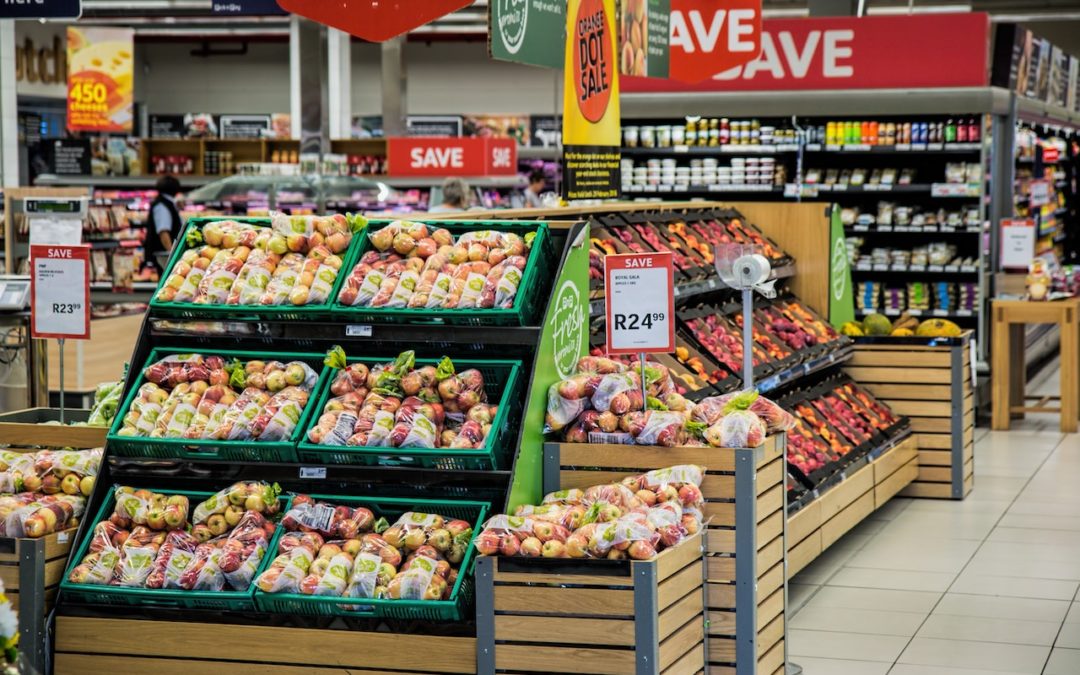When trying to reduce your monthly spending, it’s important to look at exactly how you spend your money and figure out where you can make some cuts. With the cost of food on the rise, many people are focusing on their food budget and trying to figure out how they can spend less money in this area.
One often-recommended tip is to buy more food at the grocery store rather than eating out or ordering in. At the same time, it is easy to spend a lot of money at the grocery store if you are not strategic about your shopping. Grocery stores employ several tricks to get you to spend more money. Understanding these tricks can help you avoid buying into them and stick to your budget when you shop for food. Some of the common tricks that grocery stores use include:
- Highlighting items with end caps.
The specials advertised on end caps are typically not especially good deals from a financial point of view. Instead, marketers use end caps to make certain items seem so appealing that you grab them as you walk by the display. Typically, these displays are loud and enticing so that you feel like you need the product, even if you have had it before and do not love it.
Think back to your trips to the grocery store, and you can probably think of a time when you grabbed an item from an end cap even though it was not on your list. This underscores the importance of making a list before you go to the store and then sticking to it. When you go to buy something from an end cap, think hard about whether you need it.
- Providing digital coupons for items.
At first glance, digital coupons sound like a great deal—you don’t even have to clip a coupon to get a discount. However, many of us tend to purchase an item because it is a good deal even if we don’t need it. Digital coupons are merely a ploy to get you to do this. This is why sticking to a list when you go to the store is so crucial. Of course, if you find a coupon for something that is on your list, then that is truly a great deal. Next time you’re tempted to buy something not on your list because of a coupon, think about whether you need the product before you toss it into your cart.
- Placing staple items at the rear of the store.
If you’ve been to a few grocery stores, you’ve probably noticed that many of the staple items most shoppers buy, such as milk and eggs, are located at the rear of the store. To be fair, this organization strategy may have more to do with making refrigeration affordable than getting shoppers to buy more items, but it certainly has the latter effect as well. This is because you are forced to walk through the aisles to get to the back of the store and may end up grabbing a few extra items from the shelves as you do so, especially if the item is highlighted by an end cap or is on sale. If you are going to the back of the store for some staples, it is best to stay focused on those items so that you don’t get distracted by the products you pass on the way there.
- Playing games with product prices.
Many grocery stores will play games with their prices to make you spend more money. For example, some stores will price their staples like bread and milk very low. By doing this, they hope that you will assume all their products are a good value and won’t check the prices on the other items you pick up.
Also, stores will sometimes double the price of an item for a period and then reduce it back to normal and call it 50 percent off to encourage people to buy. If stores do not discount the item, they may offer a buy-one-get-one-free deal. Ultimately, you need to pay attention to prices and know the baseline for the products you buy. Building this knowledge can take time, but it will serve you well. In addition, always pay attention to the price of any item you put in your cart.
- Putting the most expensive items at eye level.
Another trick that grocery stores often use to boost sales is putting the most recognizable—and typically most expensive—brands at eye level on the upper middle shelves. That way, you see the product and instinctively throw it into your basket. Research shows that people pay most attention to these shelves and only spend short bursts of time considering the products on higher and lower shelves. These shelves often contain the cheaper brands, as well as the store brand. Always take the time to look around at the products available and make sure you are being conscientious about your choice. Avoid choosing a product just because it’s the first you see.

